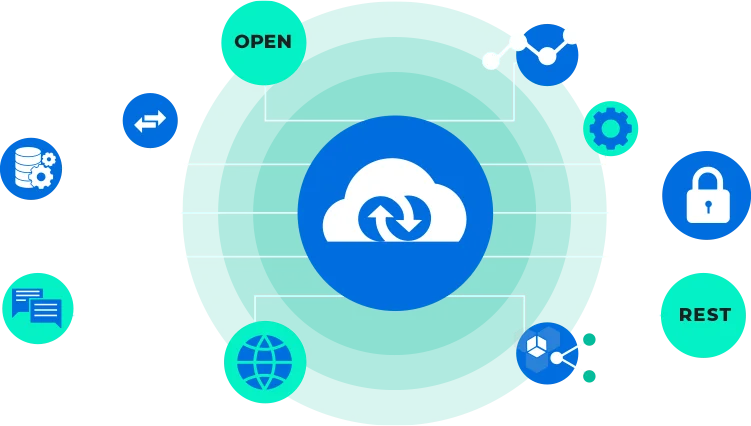

What is “API integration”?
An API is a set of programming code that enables data transmission between one software product and another. It also contains the terms of this data exchange. API integration is a range of techniques and technologies that allow applications to talk together and share information.
An Application Programming Interface is an interface that facilitates communication and connectivity between two or more software applications. API Integration refers to this seamless connectivity that allows organizations to automate business processes, and enhance the sharing and embedding of data between various applications and systems.


- You need to connect cloud apps.
- You need to connect your best-of-breed solutions.
- You need to quickly and easily create new APIs.
- You need to unlock the value from existing and legacy data sources.
- You need to compose new apps with ease.
- You need to make your teams more strategic.
- You need to improve team productivity across the board.
- API integration platform makes it easier than managing each API individually.
- Because it’s better than doing it alone.
- API integration platform future-proofs enterprise integration.
A platform to merge APIs simplifies the management of individual APIs.
API unification enables interaction and data exchange among diverse technology stack elements, optimizing processes and minimizing manual efforts. This is especially advantageous for automating procedures across various applications connected through APIs, conserving time and improving efficiency by eliminating manual input and preventing versioning conflicts.
APIs can be classified as private, partner, or public based on their policies.
Private APIs aim to enhance solutions and services within a corporation. They are predominantly utilized by internal developers or contractors to integrate a firm's IT systems or applications, develop new systems, or build customer-facing apps using existing systems. If the apps are publicly accessible, the interface is only available to those who interact directly with the API provider. The private strategy enables total control over API utilization.
Partner APIs are openly advertised and exchanged among business partners who have entered into an agreement with the provider. The primary use case for partner APIs is software integration between two entities. A firm that permits partners to access data or features benefits from supplementary revenue channels. It can also supervise how exposed digital assets are employed, ensure that third-party solutions using their APIs offer a positive user experience, and preserve corporate identity in their applications.
Public APIs are referred to as developer-facing or external APIs accessible to any third-party developers. When implemented correctly, a public API initiative can substantially boost brand recognition and supply an additional revenue source.
APIs are not only crucial for software development but also for business cooperation. These machine-readable interfaces are engineered for resource sharing and function as delivery services behind the scenes, facilitating technological interconnectivity.
In this regard, our company are intended to assist a client in solving two main tasks at once:
• to choose a suitable for the specific business needs of the company API;
• to define an efficient way of using it.
API Integration is the process of connecting two or more applications, software systems, or services together in order to enable them to exchange data and carry out operations. This type of integration is becoming increasingly common as businesses look for ways to automate operations and streamline processes.
API integration allows for data to be exchanged between applications, services, and systems in a secure and reliable manner. For example, a company may need to send data from one system to another in order to track customer orders or manage inventory. In this case, an API integration could be used to securely transfer the data between the two systems.
API integration can also be used to facilitate communication between different software applications. For example, a company may use an API integration to connect its customer relationship management (CRM) software to its accounting software. This would allow for the data to be shared between the two systems, which could be used to improve customer service and streamline operations.
API integration can also be used to create custom applications or services. For example, a company may want to develop an application that allows customers to view their order history and make payments online. In this case, an API integration could be used to connect the customer’s order history to the payment system and allow the customer to make payments from within the application.
API integration is becoming increasingly important as businesses look for ways to simplify operations and improve customer service. By connecting different applications, services, and systems, companies can streamline operations and reduce costs. API integration can also help to improve customer service by allowing customers to view their order history and make payments within a single application.

